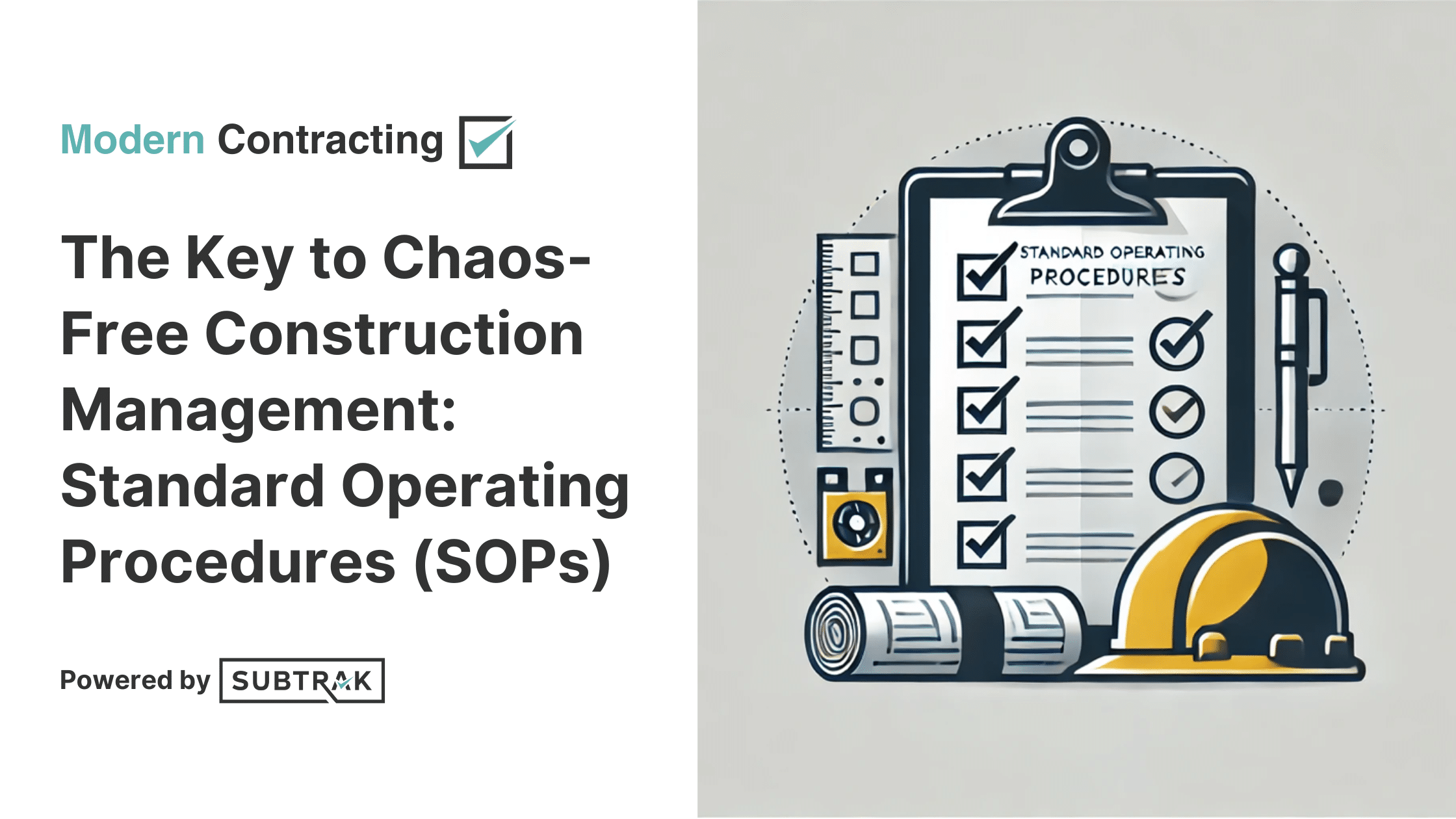For construction managers (CMs) working on high-profile projects, the stakes are high. CMs are often responsible for overseeing projects that involve significant financial investments, tight schedules, and a multitude of moving parts. Their primary role is to limit risk and chaos for building owners, ensuring that construction proceeds efficiently, safely, and within budget. However, with so many factors at play, even the most experienced construction managers can struggle to maintain consistency and control. This is where Standard Operating Procedures (SOPs) become an invaluable tool.
What is an SOP in Construction Management?
An SOP (Standard Operating Procedure) in construction management is a documented set of instructions that outline best practices, workflows, and processes for managing a construction project. SOPs serve as a blueprint for how things should be done, ensuring that tasks are executed in a standardized, efficient, and repeatable manner. They help construction managers reduce errors, improve communication, and create a structured approach to handling every phase of a project.
Why Construction Managers Need SOPs
1. Minimizing Risk for Building Owners
The primary responsibility of a construction manager is to limit risk for the owner. Construction projects are filled with uncertainties: unforeseen site conditions, material shortages, labor issues, and design changes can all derail timelines and budgets. By following SOPs, CMs can implement proactive risk management strategies, ensuring that every aspect of the project is handled with consistency and foresight. This not only protects the interests of the owner but also enhances the CM’s reputation as a reliable professional.
2. Ensuring Quality and Compliance
Quality control is a key aspect of construction management. Without clear procedures, work can vary significantly in quality from one project to another. SOPs establish quality standards and ensure compliance with industry regulations, safety protocols, and contractual obligations. By following documented procedures, CMs can enforce consistency across all projects, ensuring that work meets both owner expectations and legal requirements.
3. Enhancing Efficiency and Preventing Delays
Construction projects operate under tight schedules, and delays can lead to significant financial losses. A well-defined SOP can help prevent common setbacks by standardizing decision-making and outlining step-by-step protocols for handling potential bottlenecks. Whether it’s coordinating subcontractors, scheduling inspections, or managing procurement, having clear procedures in place enables CMs to move projects forward without unnecessary disruptions.
4. Managing Multiple Projects Simultaneously
Many construction managers juggle multiple projects at once, often shifting between job sites and managing various teams. In such a fast-paced environment, it’s easy to overlook details. SOPs serve as a reference guide, allowing CMs to stay organized, track progress, and ensure that critical steps are not missed. Having checklists and documented workflows allows for seamless transitions between projects, reducing stress and increasing overall productivity.
5. Improving Communication with Contractors and Teams
Effective communication is crucial in construction management, yet misalignment between CMs and contractors is a common source of conflict. When SOPs are in place, construction managers can provide clear expectations and guidelines to subcontractors, ensuring that everyone is on the same page. This not only improves collaboration but also enhances professionalism. Contractors respect a CM who has well-documented processes and a structured approach to project execution.
6. Standardizing Construction Management Practices Within a Firm
For construction management firms with multiple project managers, SOPs provide a unified system for how projects should be run. When every CM follows the same set of procedures, consistency is maintained across all projects, and new hires can quickly adapt to the firm’s established workflows. Additionally, having documented procedures makes it easier to train and onboard new team members, ensuring that knowledge is not lost when employees transition or leave.
Key Areas Where SOPs Benefit Construction Managers
- Project Planning & Pre-construction: SOPs outline the necessary steps for conducting feasibility studies, risk assessments, and bid evaluations. They also provide structured methodologies for scheduling and resource allocation.
- Site Management & Safety Compliance: Having SOPs for job site inspections, safety procedures, and incident reporting ensures that projects comply with OSHA regulations and other industry standards.
- Procurement & Vendor Management: SOPs help streamline procurement processes, from vendor selection to materials tracking, ensuring that supplies arrive on time and within budget.
- Change Order Management: A standardized process for handling change orders helps prevent cost overruns and scheduling conflicts by ensuring that all modifications are properly documented and approved.
- Quality Control & Inspections: Standardized checklists for quality assurance inspections ensure that work is being performed to the required standards before moving on to the next phase of construction.
- Closeout & Handover: Documented procedures for final inspections, punch lists, and owner training ensure that the project is completed efficiently and meets all contractual obligations.
The Long-Term Value of SOPs in Construction Management
Construction managers who implement SOPs not only improve their day-to-day operations but also enhance their long-term career prospects. SOPs serve as a professional asset, demonstrating a commitment to excellence, organization, and accountability. They also provide a foundation for continuous improvement. By reviewing and refining procedures over time, construction managers can optimize efficiency, reduce risks, and enhance overall project success.
For construction management firms, having well-documented SOPs can also be a significant competitive advantage. Firms that can demonstrate structured, repeatable processes are more attractive to clients and investors. Additionally, a standardized approach allows firms to scale operations more effectively, bringing in new talent without compromising quality or consistency.
Conclusion
Standard Operating Procedures (SOPs) are a game-changer in construction management. By providing a clear framework for managing projects, SOPs help construction managers minimize risk, maintain quality, streamline operations, and improve communication. Whether working independently or as part of a firm, having a documented system for construction management ensures that projects run smoothly, efficiently, and professionally.
For construction managers looking to take their project management operations to the next level, a construction SOP management platform like Subtrak can make the process seamless. Subtrak provides the tools such as built-in AI SOP writing to help CMs document their workflows, create actionable checklists, and streamline their processes from start to finish faster than ever before. With powerful features and Custom SOP writing services designed to keep your projects organized, enhance contractor accountability, and prevent costly mistakes, Subtrak gives you the tools to stay in control and achieve the best possible outcomes. Best of all? It’s 100% free to sign up! If you’re ready to standardize your construction management operations, make sure you check out Subtrak today.





